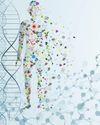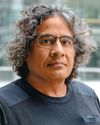
How did you arrive at the twin-cycle hypothesis?
The basis of the hypothesis was the work that I had done to try and understand how the body and, in particular, how the liver was controlling the glucose level. I found that the fat in the liver makes it resistant to insulin and glucose production is far too high in type 2 diabetes [patients]. If we reduce the amount of fat in the liver, the insulin sensitivity goes back to normal. That explains the control of sugar in type 2 diabetes. So, this was 2008. And, I put that together with another thought which was if it is too much fat in the liver that is causing this, type 2 diabetes has to be a simple condition. It is always associated with putting on a little bit more weight than ideal. So, I put together my thoughts on the liver with what is happening where the insulin was produced, which is the pancreas. And I said, 'What if it is too much fat in the pancreas that is causing the problem of not making enough insulin? 'Because not only does the insulin not work because of insulin resistance but also not enough insulin is being made rapidly after eating. As I played with these ideas on a piece of paper and drew arrows between the things, I could see it all work as two vicious cycles.
One vicious cycle in the liver would cause a steady buildup of fat in the liver, but then that fat is going to be exported. That is what the liver does. It just gives fat to the rest of the body. If it is too much fat in the liver, maybe too much fat is coming out of it as well and settling in the pancreas and other places. And then that would cause blood sugar to go higher, and that will make more fat in the liver. So we have two vicious cycles, which are interacting.
Esta historia es de la edición December 03, 2023 de THE WEEK India.
Comience su prueba gratuita de Magzter GOLD de 7 días para acceder a miles de historias premium seleccionadas y a más de 9,000 revistas y periódicos.
Ya eres suscriptor ? Conectar
Esta historia es de la edición December 03, 2023 de THE WEEK India.
Comience su prueba gratuita de Magzter GOLD de 7 días para acceder a miles de historias premium seleccionadas y a más de 9,000 revistas y periódicos.
Ya eres suscriptor? Conectar

Hat-Trick Or Has-Beens?
India look to win their third straight Test series in Australia, but ageing superstars and recent humiliation at home have cast a shadow on their hopes

Constipation Can Put Your Heart At Risk
PEOPLE WITH CONSTIPATION have an increased risk of major cardiac events, including heart attack, stroke and heart failure, especially if they also have high blood pressure, finds an international study published in the American Journal of Physiology-Heart and Circulatory Physiology.

Too Much Sitting Can Accelerate Ageing
SITTING FOR EXTENDED PERIODS can harm the heart and accelerate ageing, even if you are young and get the minimum recommended amount of daily exercise, according to a US study published in the journal PLOS One.

Efficiency and innovation
As health care evolves, professionals must employ innovative methods to refine their skills

Level up
Only 30 per cent of needy patients are able to undergo transplant in India; we need more dedicated transplant centres

HOPE STEMS FROM A CELL
While stem cell therapies have shown success in treating blood disorders, orthopaedic ailments, autoimmune diseases and eye issues, there is hope that they can one day treat patients with heart disease, blindness, Parkinson's, HIV, diabetes and spinal cord injuries

Mind matters
Your mindset can limit or expand your physical ability

Cutting edge
Would you go under the knife if a robot was the one holding it? Or would you say, \"No way, I need a human touch\"? You might have to decide soon because a robot that can imitate skilled human surgeons is already here.

The smallest cut
Minimally invasive surgeries have a bright future, with virtual reality and 3D procedures offering greater precision and AI on the horizon

Signalling a revolution
Canadian scientist and entrepreneur Sachdev Sidhu is focused on bringing cutting-edge antibody engineering to his country of origin